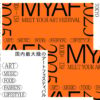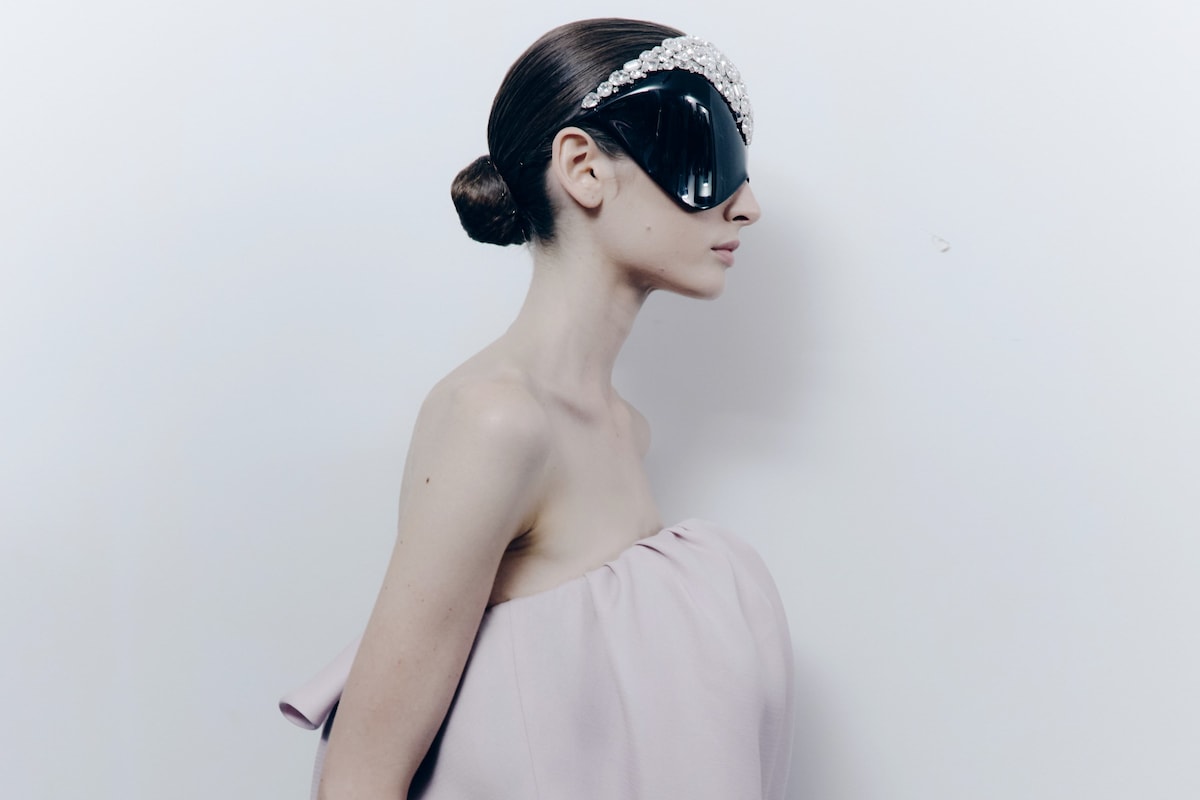
Rewrite
Lead ImageBalenciaga Summer 2026Photography by Harry Miller
“Body, space, surface.” Those were the three words that obsessed Pierpaolo Piccioli when considering the work of Cristóbal Balenciaga – a way into a legacy that is awesome, awe-inspiring and for many unassailable. “Like every designer, I know Cristóbal’s work by heart,” Piccioli said in a conversation ahead of the show. “But when I was introduced to the archive, when I had the chance to see and touch the clothes for the first time, I realised I was witnessing something truly different and extraordinary.”
Piccioli is talking from the old headquarters of Balenciaga, in the Hôpital Laennec. It’s old in that Balenciaga are moving out, actually back to the Avenue George V where the original ateliers were based until the house’s closure in 1968. Although Cristóbal never worked there, a hospital is very Cristóbal. Think of his surgical cut, the cosmetic enhancement of women who went under his knife and emerged transformed, idealised through cloth. Surgery meets ceremony – Balenciaga was always described in religious terms, and the fact Piccioli’s show was based in that hospital, in its cross-shaped central chamber, wasn’t happenstance.
Nothing, indeed, is accidental with Piccioli. He’s a deep thinker when it comes to fashion, and since his appointment as the house’s creative director back in May, he’s been immersing himself in the house’s archive and examining what it was that made Balenciaga tick. The point of this show, for Piccioli, was a shift in Balenciaga ideology – essentially, realigning its creation today to pieces that reflect not the shapes or styles of the founder, but his original methodology. “I didn’t want to do an homage to Cristóbal,” Piccioli said. “I didn’t want to imitate, but to transform his creation into something different. For me, as my first letter here in Balenciaga, I wanted to embrace the past of this house, because I feel that it’s more honest. Not to deny what has been done, but embracing in order to transform it for the future.”
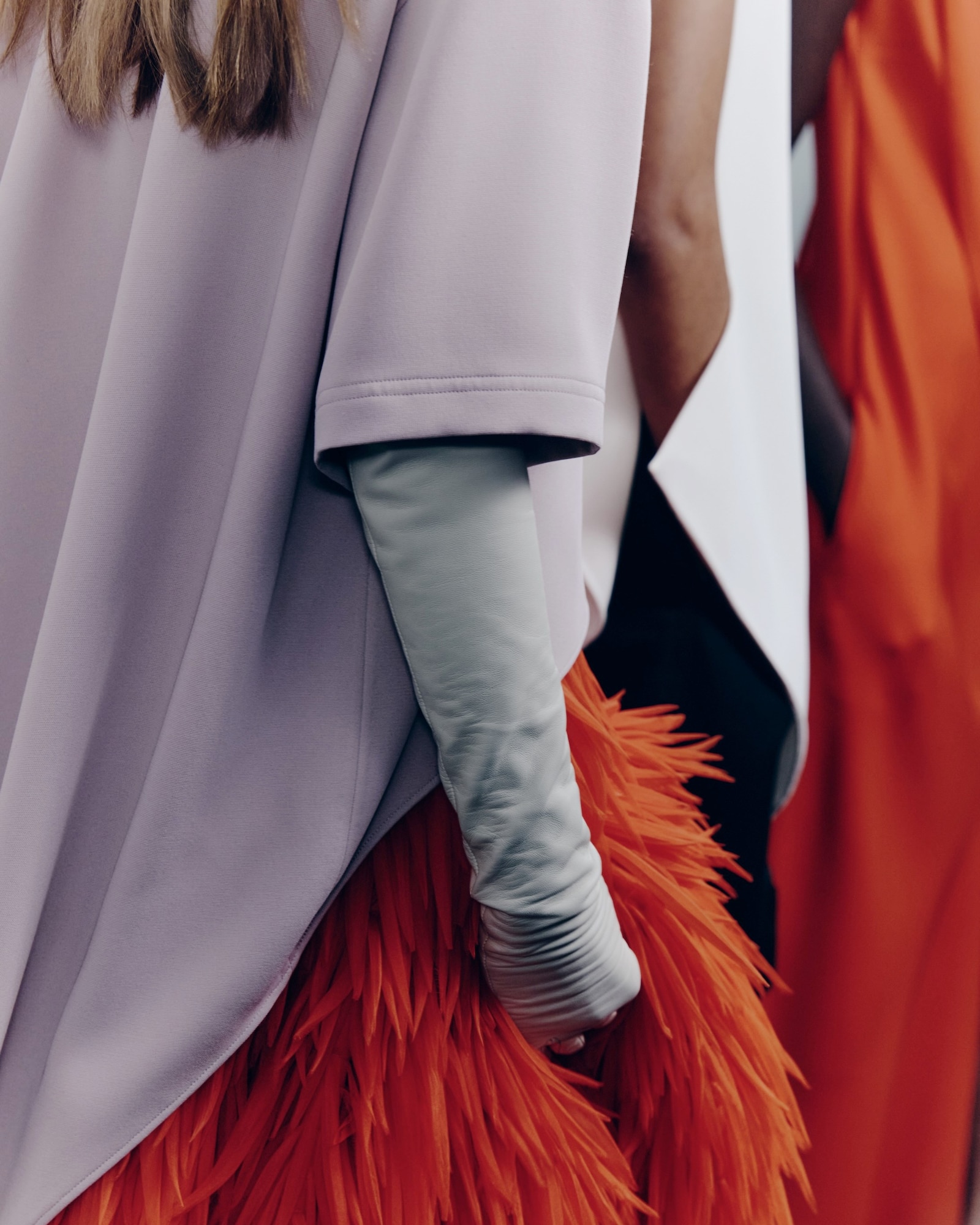
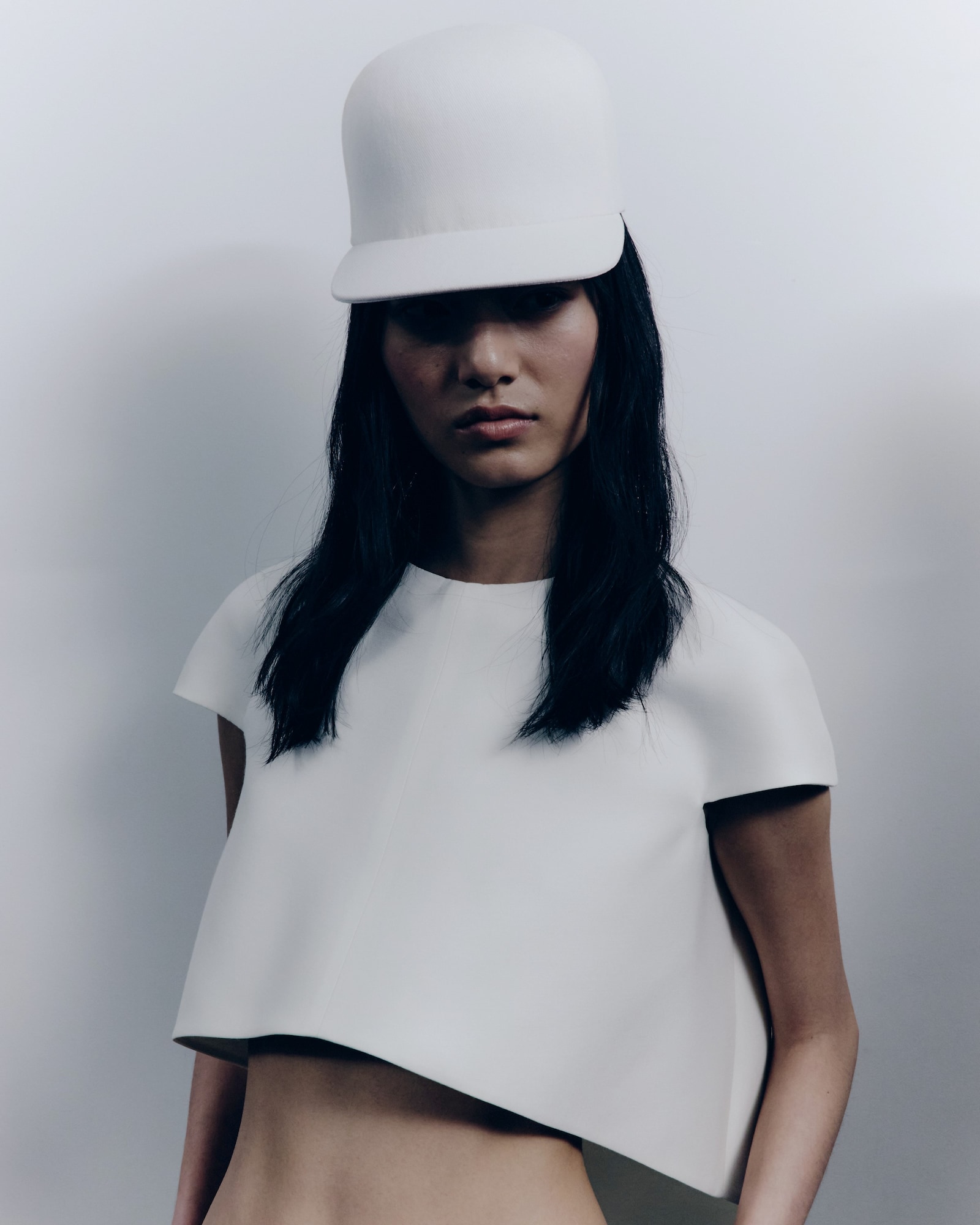
For Piccioli, the process was first and foremost about the body, that body representing humanity. “When you see a Cristóbal creation, even if it goes far from the body, you still feel the body – you understand that it relates to the body,” he said. Piccioli chose to translate that to an entire collection – a sense of weightlessness, of air and space between body and fabric, an idea and ideal of Balenciaga’s work most cited by his clients as the magical quality of his clothes. “I wanted to create volume as well, shape, silhouette as Cristóbal did.”
So although this collection was not an homage, there were echoes of Balenciaga through everything. The opening look was his version of the somewhat unattractively named sack dress of 1957: a free-form dress hanging from the shoulders that, effectively, shaped the eased trapeze silhouettes of the 1960s – and, arguably, most of modern dress that followed them. Piccioli executed it in ‘neo gazar’, a new version of the fabric invented by Balenciaga in 1958 – same feeling, different hand. Embellishment was also intended to be structural, applications of flowers or fabric feathers and tendrils transforming proportions, so cropped T-shirts seemed plumped-out and moonlike, albeit a mirage of embroidery. Yes, T-shirts – he translated Balenciaga’s volumes and approaches to an entire wardrobe, as likely to propose a bomber jacket or wide-legged culottes as an evening gown. That’s keyed to the fact Balenciaga dressed real women, rather than executing concepts merely as creative conceits. There was always a reality, even at his most geometric and abstract.
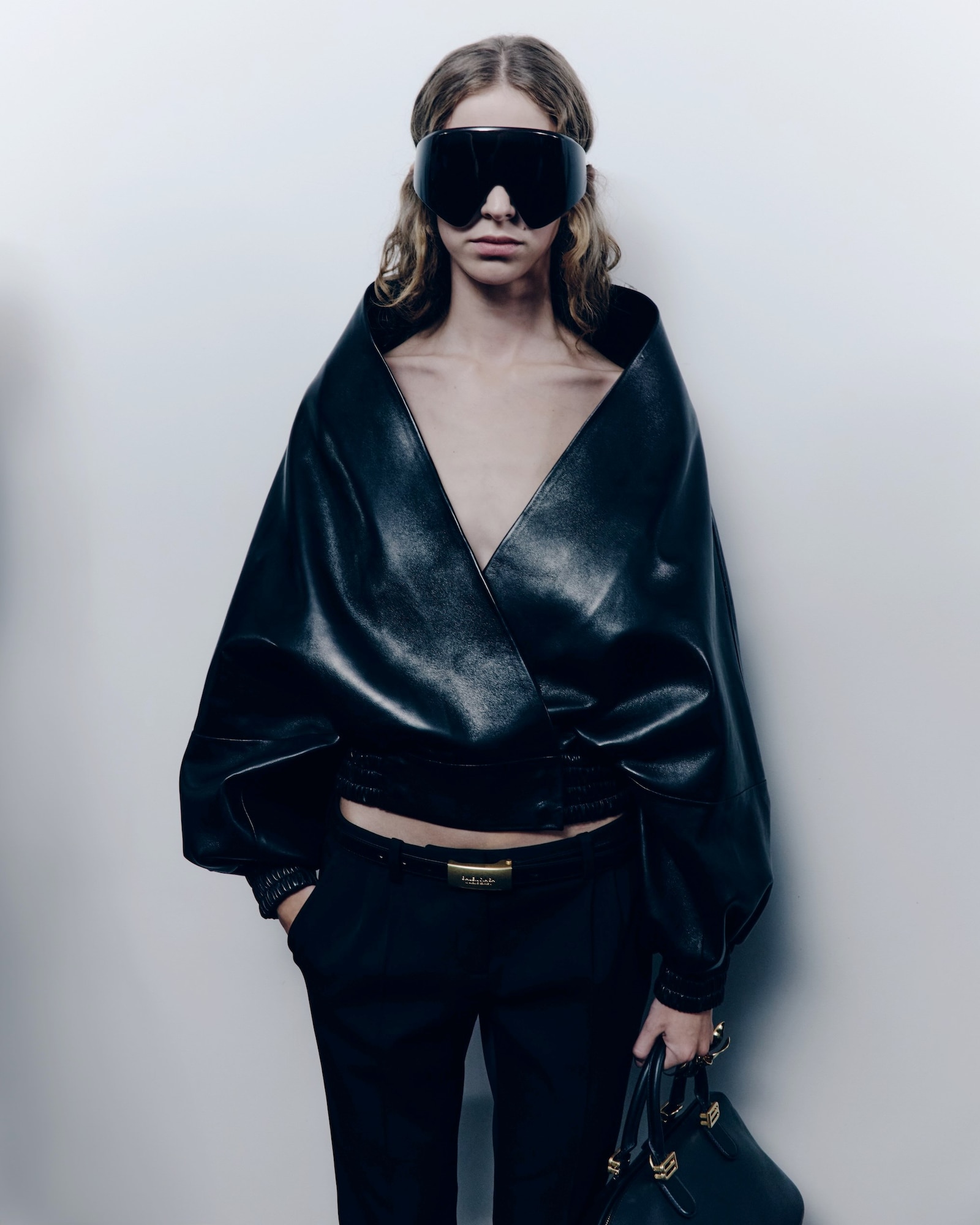
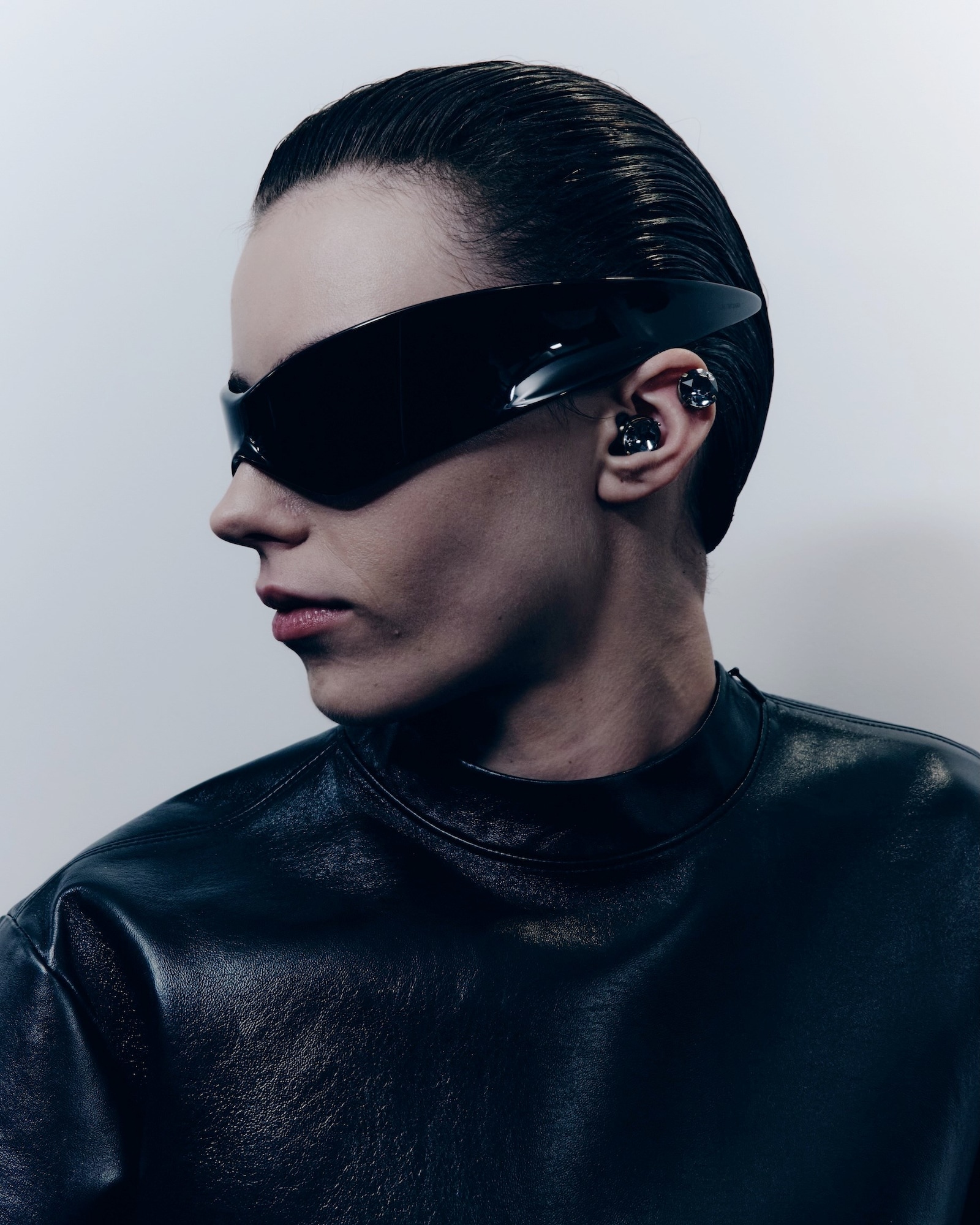
This was Piccioli’s opening shot for the house, a sweep through its history, but also its recent past. He paid homage to Nicolas Ghesquière with a reissue of the City bag he designed in 2001, appearing as part of a Balenciaga show for the first time: teamed with a leather jacket and chinos applied with new volume, it had a fresh, immediate appeal. And Demna’s visor-like sunglasses cropped up repeatedly, although Piccioli crowned their first iteration with a diadem of crystal, matching the platform thong sandals, a combination of everyday and rarified pedestal for his women. There was plenty of black and white – Balenciaga non-colours, austere and nun-like. But the other hues were pure Piccioli – jade, coral, oxblood, a tart citrusy chartreuse – although their brilliance, even violence, has its reflection in the Balenciaga archives.
More than anything else, Piccioli wanted to reflect the movement of Balenciaga’s clothes, their vitality. “It’s both ideological and physical,” Piccioli said. “It’s an approach of work, but it is also an approach of life.”
in HTML format, including tags, to make it appealing and easy to read for Japanese-speaking readers aged 20 to 40 interested in fashion. Organize the content with appropriate headings and subheadings (h1, h2, h3, h4, h5, h6), translating all text, including headings, into Japanese. Retain any existing
tags from
Lead ImageBalenciaga Summer 2026Photography by Harry Miller
“Body, space, surface.” Those were the three words that obsessed Pierpaolo Piccioli when considering the work of Cristóbal Balenciaga – a way into a legacy that is awesome, awe-inspiring and for many unassailable. “Like every designer, I know Cristóbal’s work by heart,” Piccioli said in a conversation ahead of the show. “But when I was introduced to the archive, when I had the chance to see and touch the clothes for the first time, I realised I was witnessing something truly different and extraordinary.”
Piccioli is talking from the old headquarters of Balenciaga, in the Hôpital Laennec. It’s old in that Balenciaga are moving out, actually back to the Avenue George V where the original ateliers were based until the house’s closure in 1968. Although Cristóbal never worked there, a hospital is very Cristóbal. Think of his surgical cut, the cosmetic enhancement of women who went under his knife and emerged transformed, idealised through cloth. Surgery meets ceremony – Balenciaga was always described in religious terms, and the fact Piccioli’s show was based in that hospital, in its cross-shaped central chamber, wasn’t happenstance.
Nothing, indeed, is accidental with Piccioli. He’s a deep thinker when it comes to fashion, and since his appointment as the house’s creative director back in May, he’s been immersing himself in the house’s archive and examining what it was that made Balenciaga tick. The point of this show, for Piccioli, was a shift in Balenciaga ideology – essentially, realigning its creation today to pieces that reflect not the shapes or styles of the founder, but his original methodology. “I didn’t want to do an homage to Cristóbal,” Piccioli said. “I didn’t want to imitate, but to transform his creation into something different. For me, as my first letter here in Balenciaga, I wanted to embrace the past of this house, because I feel that it’s more honest. Not to deny what has been done, but embracing in order to transform it for the future.”


For Piccioli, the process was first and foremost about the body, that body representing humanity. “When you see a Cristóbal creation, even if it goes far from the body, you still feel the body – you understand that it relates to the body,” he said. Piccioli chose to translate that to an entire collection – a sense of weightlessness, of air and space between body and fabric, an idea and ideal of Balenciaga’s work most cited by his clients as the magical quality of his clothes. “I wanted to create volume as well, shape, silhouette as Cristóbal did.”
So although this collection was not an homage, there were echoes of Balenciaga through everything. The opening look was his version of the somewhat unattractively named sack dress of 1957: a free-form dress hanging from the shoulders that, effectively, shaped the eased trapeze silhouettes of the 1960s – and, arguably, most of modern dress that followed them. Piccioli executed it in ‘neo gazar’, a new version of the fabric invented by Balenciaga in 1958 – same feeling, different hand. Embellishment was also intended to be structural, applications of flowers or fabric feathers and tendrils transforming proportions, so cropped T-shirts seemed plumped-out and moonlike, albeit a mirage of embroidery. Yes, T-shirts – he translated Balenciaga’s volumes and approaches to an entire wardrobe, as likely to propose a bomber jacket or wide-legged culottes as an evening gown. That’s keyed to the fact Balenciaga dressed real women, rather than executing concepts merely as creative conceits. There was always a reality, even at his most geometric and abstract.


This was Piccioli’s opening shot for the house, a sweep through its history, but also its recent past. He paid homage to Nicolas Ghesquière with a reissue of the City bag he designed in 2001, appearing as part of a Balenciaga show for the first time: teamed with a leather jacket and chinos applied with new volume, it had a fresh, immediate appeal. And Demna’s visor-like sunglasses cropped up repeatedly, although Piccioli crowned their first iteration with a diadem of crystal, matching the platform thong sandals, a combination of everyday and rarified pedestal for his women. There was plenty of black and white – Balenciaga non-colours, austere and nun-like. But the other hues were pure Piccioli – jade, coral, oxblood, a tart citrusy chartreuse – although their brilliance, even violence, has its reflection in the Balenciaga archives.
More than anything else, Piccioli wanted to reflect the movement of Balenciaga’s clothes, their vitality. “It’s both ideological and physical,” Piccioli said. “It’s an approach of work, but it is also an approach of life.”
and integrate them seamlessly into the new content without adding new tags. Ensure the new content is fashion-related, written entirely in Japanese, and approximately 1500 words. Conclude with a “結論” section and a well-formatted “よくある質問” section. Avoid including an introduction or a note explaining the process.

